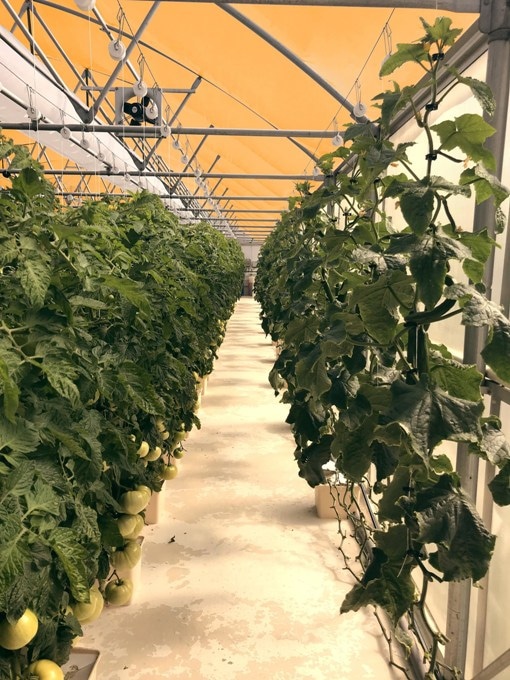Aug 16 2018
UbiQD, Inc., a New Mexico-based nanotechnology development company, announced today that it has been awarded a Small Business Technology Transfer Program (STTR) Phase I contract by the National Aeronautics and Space Administration (NASA). The contract will provide funding for UbiQD's collaborative research and development with the University of Arizona to explore using quantum dots (QDs) to tailor the spectrum of sunlight for optimized crop growth for in-space and planetary exploration missions.
 Growing Opportunities is hosting UbiQD’s first commercial greenhouse pilot project in Alcalde, New Mexico. This false color photo shows the Dutch-style greenhouse where UbiGro™ Film is boosting the weight yield of tomatoes.
Growing Opportunities is hosting UbiQD’s first commercial greenhouse pilot project in Alcalde, New Mexico. This false color photo shows the Dutch-style greenhouse where UbiGro™ Film is boosting the weight yield of tomatoes.
"We are excited to be working with UbiQD to explore this innovative approach in managing wavelengths of light from light source to plant leaf within a food plant production application," said Dr. Gene Giacomelli, professor in the Department of Biosystems Engineering Department and the Controlled Environment Agriculture Center at the University of Arizona. "This technology has the potential to improve the PAR light source efficiency, thereby becoming a game-changer for indoor crop production."
UbiQD has quietly been developing its QD agriculture films after receiving funding from Breakout Labs in 2017 to explore the concept. The company is now aiming to launch a retrofit version of its film product in late 2018 under the UbiGro™ brand. The UbiGro™ Film is designed to promote vegetable production and accelerate plant growth.
"With NASA's support we will work with the University of Arizona's Controlled Environment Agriculture Center in their College of Agriculture and Life Sciences to evaluate our quantum dot agriculture films for improved lettuce production," said Dr. Matt Bergren, Chief of Product at UbiQD and Principal Investigator for the project. "We have already been testing the films, in both research and commercial greenhouses in the U.S., and we've seen yield improvements for tomatoes on the order of 20-30 percent."